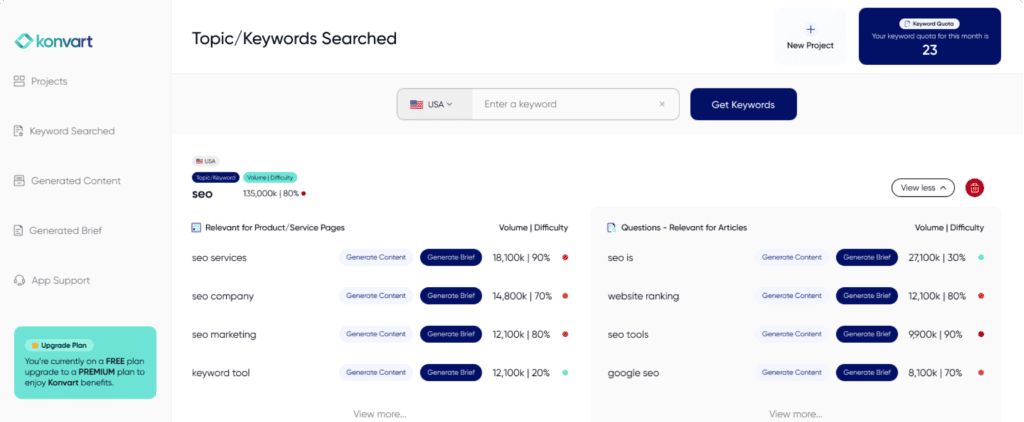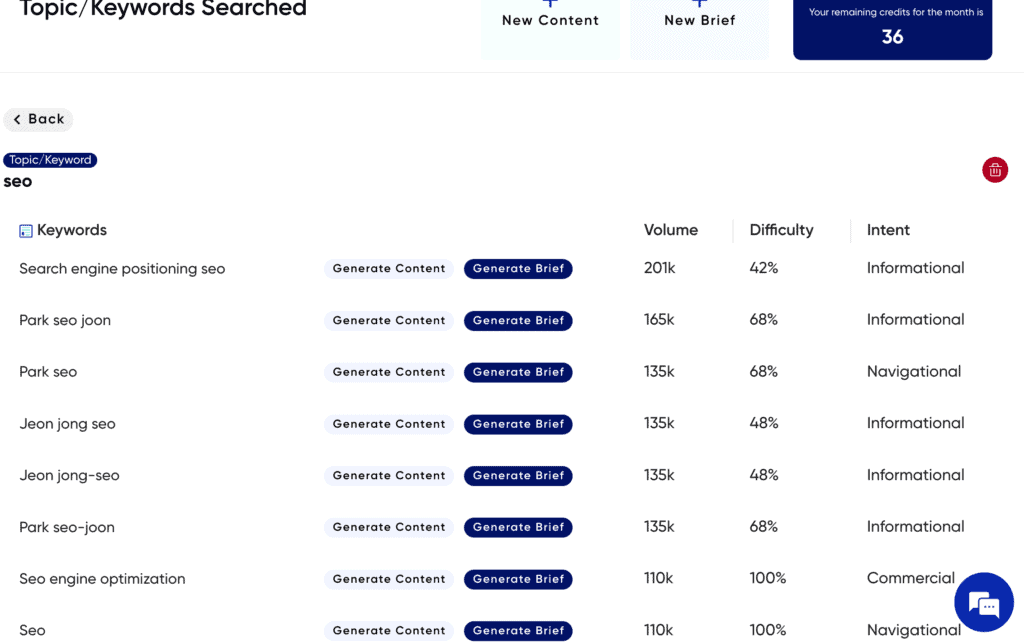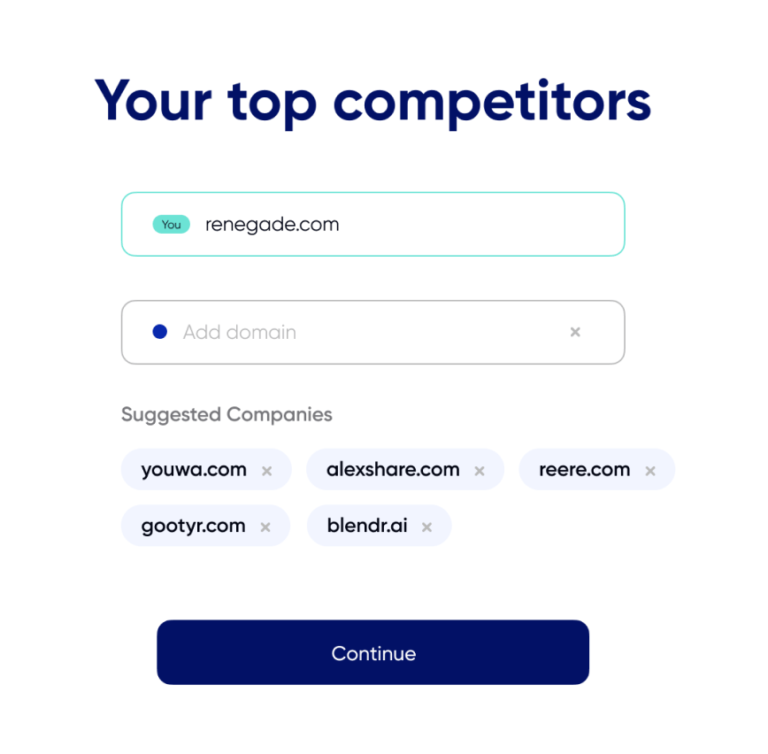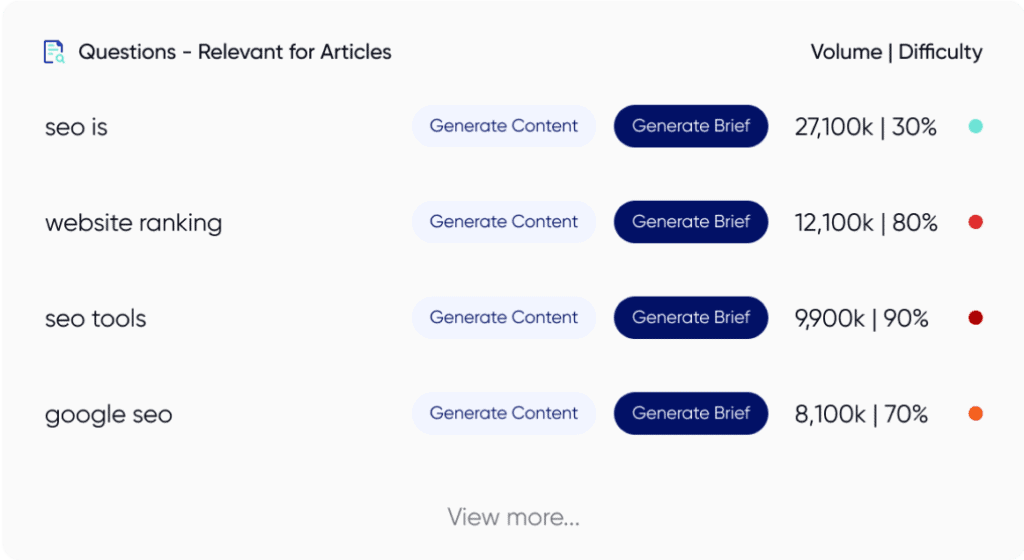Crafting SEO-friendly content isn’t just about peppering your articles with keywords; it’s an art that combines relevance, readability, and strategic placement to boost your visibility on search engines. As SEO specialists and writers, mastering this art can significantly enhance your content’s reach and effectiveness.
This guide will equip you with actionable tips and data-driven insights to refine your writing skills, ensuring each piece of content appeals to your audience and climbs the ranks in search results.
What is SEO Writing?
Any content you create to attract visitors from search engines is SEO content, including anything people can read or consume online.
SEO writing creates compelling, informative, and optimised content for search engines. The primary goal is to enhance visibility in search engine results, ensuring the content reaches its target audience and effectively engages them.
At its core, SEO writing involves integrating keywords and phrases that potential readers are actively searching for. These keywords should be seamlessly woven into the content, maintaining natural readability and relevance to the topic.
It’s not just about stuffing content with keywords; it’s about placing them strategically to enhance the content’s discoverability without compromising quality.
Effective SEO writing balances engaging readers and satisfying search engine algorithms. This involves crafting headlines that grab attention while naturally incorporating target keywords.
The introduction should hook the reader immediately, promising them value and insights. Each paragraph should build on this promise, delivering valuable information clearly and concisely.
While SEO content can take many different forms, the following are the most popular ones:
- Glossaries
- Blogs
- Web pages
- Product pages
- Website articles
- Videos and explainers
The Basics of SEO Content Writing
Keyword Research and Optimisation
Before writing any content, it is imperative to identify the right keywords. Your target audience frequently uses these terms when searching for information or products online. Use Konvart’s keyword research tool to gather insights into popular search terms within your niche.
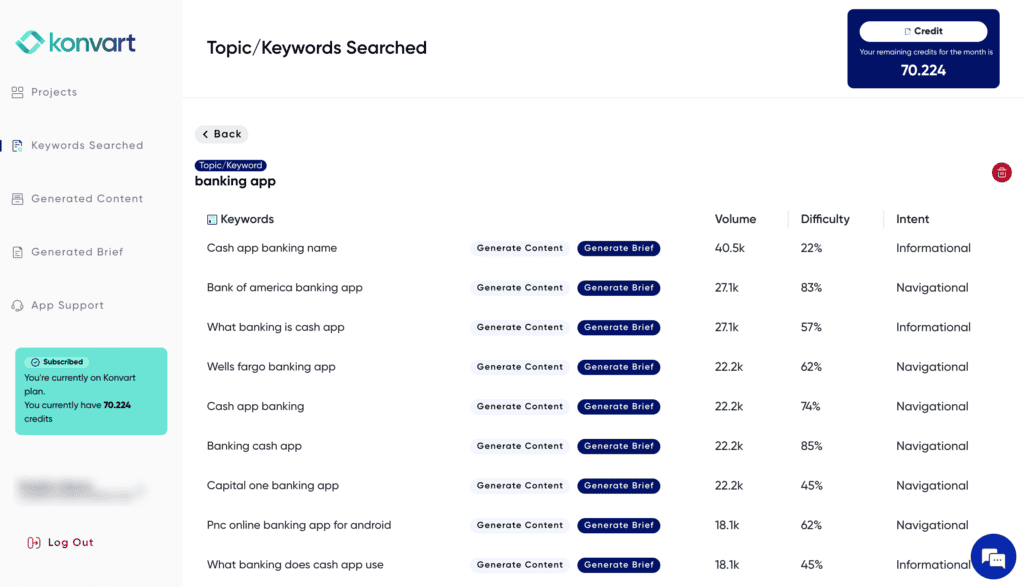
Once identified, strategically incorporate these keywords into your content, including the title, headers, and body text.
However, avoid keyword stuffing, as it can negatively impact your SEO performance and reader experience.
Content Structure
A well-structured article facilitates both readability and SEO effectiveness. Use headings and subheadings (H1, H2, H3) to organise content logically. This helps readers navigate the article easily and allows search engines to better understand and rank the content.
Each section should flow naturally into the next, with clear transitions and focused discussion points.
Also, place the most important bits at the top of the posts – the higher, the better.

Engaging and Relevant Content
The quality of your content is crucial. High-quality writing that engages and provides value to readers tends to perform better in search results. Address topics that resonate with your audience’s interests or answer their questions.
Including statistics and data can enhance credibility and engagement. For instance, integrating statistics like “companies that blog have 55% more website visitors” can underscore the importance of consistent, quality blogging.
Meta Descriptions and Title Tags
While often overlooked, meta descriptions and title tags play a significant role in SEO. A compelling title tag should accurately reflect the content’s subject matter while enticing users to click through from search results. Similarly, a well-crafted meta description provides a brief summary of the article’s content, encouraging clicks without misleading potential visitors.
Images and Videos
Use images sparingly, only when they serve a specific purpose, such as illustrating a point without words or breaking up the text. It’s crucial to exercise restraint and not overuse images in place of text, as this can negatively impact your rating. Content writers often find stock pictures from platforms like Adobe Stock useful.
Another powerful tool to keep viewers on the page is videos. Videos can significantly extend a user’s stay on a page, which is beneficial for search engine optimisation. Use them to explain concepts visually or, importantly, to provide a more in-depth understanding of issues.
Go Straight to the Point – Eliminate Fluff
Humans hate fluff – Google, too. You can see that from featured snippets in search results.
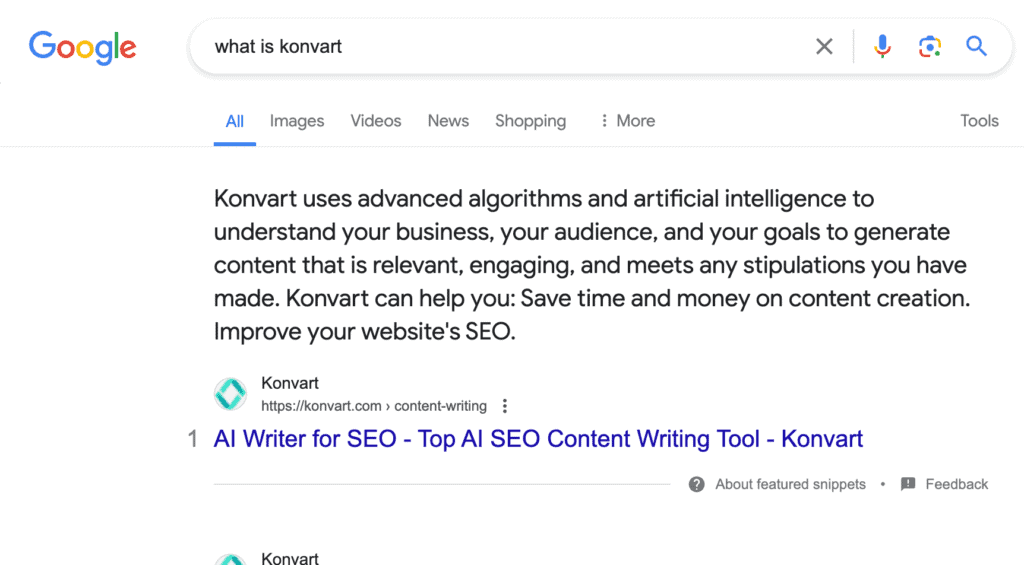
So, go straight to the point, answer questions immediately, and do not repeat things unnecessarily.
Answer all the Questions That Your Topic Should Answer
Your content must be solid if you want to compete against top-ranking competitors. This means ensuring that it covers everything necessary for that topic. Answer every question a reader might have about that topic—if you can’t fully answer a question within the article, create another article for it and link to it.
Check People Also Ask on Google Search for question ideas. Also, check competitors for heading ideas. It also helps to use a brief generator and SERP analyser like Konvart’s.
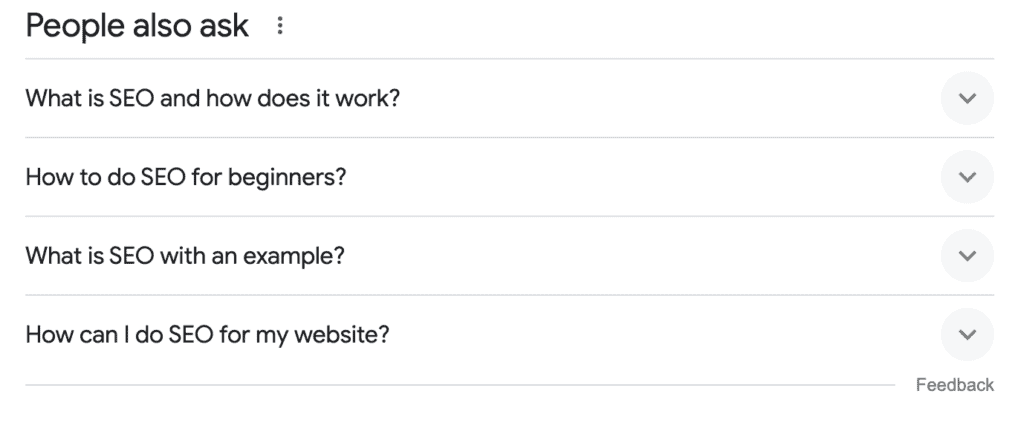
What Does SEO Friendliness Mean?
SEO friendliness in the context of content writing means writing content that search engines can understand and index correctly – basically writing your content well enough that Google loves it.
To create SEO-friendly content, use the five points discussed above. In addition to those, also have the following in mind:
- Readability and Accessibility: SEO-friendly content must be easy to read and accessible. This means using clear language, short sentences, and paragraphs alongside subheadings to break up text. These elements help search engines better understand the structure and key points of your content, making it more likely to match with relevant queries.
- Mobile Optimisation: With over 50% of global website traffic coming from mobile devices, optimising your content for mobile is non-negotiable. SEO-friendly content must render well on various devices and screen sizes to ensure a good user experience, which is a significant factor in Google’s ranking algorithms.
- Engagement Metrics: Search engines also consider user engagement metrics like bounce rates, time on page, and click-through rates to evaluate content quality. Engaging content that keeps readers interested and encourages them to explore further is often seen as more valuable, thereby boosting its SEO potential.
- Use of Multimedia: Integrating relevant images, videos, and infographics can help make your content more engaging for readers and more attractive to search engines. Multimedia elements should be optimised with appropriate file names, alt text, and descriptions that reinforce the SEO goals of your overall content.
- Internal Linking: Incorporating internal links helps with website navigation and boosts SEO by showing search engines the relationships between different pieces of content on your site. It encourages longer visit durations by providing readers with easy pathways to additional relevant information.
- External Links: Linking to reputable external sites can boost your credibility and SEO performance.
Key Steps to Start Executing an SEO-Friendly Content Strategy Today
To kick start your SEO-friendly content strategy effectively, create a clear, actionable plan that aligns with your business goals and audience needs.
Here are some key steps to ensure you’re on the right track:
- Define Your Objectives: Before you pen down your first word, decide what you aim to achieve with your content. Are you looking to increase traffic, boost sales, or improve engagement? Setting these goals early on will guide your content creation process.
- Research Keywords Thoroughly: Find relevant keywords that match your audience’s search intent. Don’t just focus on high-volume terms; include long-tail keywords that could drive more targeted traffic.
- Analyse Your Audience: Understanding who your readers are is crucial. What are their pain points? What type of content do they prefer? This knowledge will not only help tailor your content but also assist in structuring it in a way that resonates with them.
Having done the above, your next step should be to craft compelling headlines and then go into writing and optimising the content (see tips above). We will look at each bit from keyword research below.
How to do Keyword Research
Before you even type the first word of your blog post, spending time on keyword research can significantly impact the success of your content. This step is not just about finding any keywords; it’s about identifying the right keywords that align with your audience’s search intent and your content goals.
I already mentioned using Konvart to find keywords above.
Konvart can be instrumental to your SEO content writing. As a content writer, you may not need to go into the nitty-gritty of keyword research, but it helps to understand the basics of keyword research for SEO.
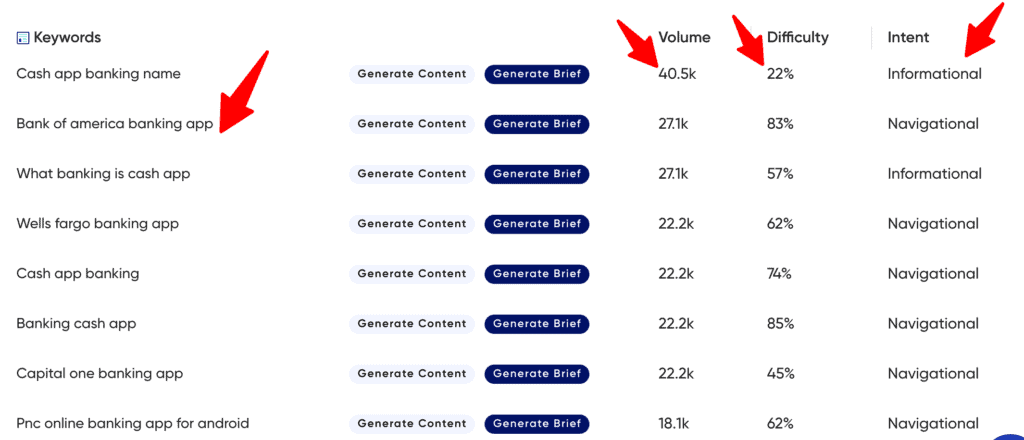
Most content writers get keywords already from SEO specialists. What you need to pay attention to are the related keywords and the intent. Checking for related keywords in keyword research can help you spot opportunities to further optimise your content as well as questions to answer in the content.
Search Intent for SEO Content Writing
Search intent refers to the reason behind a user’s query on search engines.
Typically, search intent falls into four main categories:
- Informational Intent: Users seek to learn or gather information. Example queries include “how to tie a tie” or “what is SEO.”
- Navigational Intent: Users search for a specific website or page. For instance, someone might type “Facebook login” or “Amazon customer service.”
- Transactional Intent: Here, the intent is to purchase. Searches like “buy Nikon camera” or “discount on yoga mats” are common examples.
- Commercial Investigation: Users are considering a purchase and want to compare products or read reviews. Examples include “best SEO tools 2024” or “iPhone vs. Android reviews.”
One easy way to understand search intent is to look at the SERPs—what type of pages are ranking on the first page? Are they blogs/articles? Product pages? What page type Google sees as relevant should be what you create content for unless you are sure that is the wrong intent, aka Google isn’t satisfying the user’s query with that page type.
Also, analyse keyword phrases – Look at the language used in the search query. Words like “buy,” “price,” and “how to” can give clues about the type of content the searcher expects. You can also use keyword research tools. As you can see in the above screenshot, Konvart provides search intent data.
Creating Content That Matches Search Intent
Once you’ve identified the search intent, tailor your content accordingly:
- Informational Intent: Provide comprehensive and authoritative answers. Clear headings, bullet points, and images to enhance readability and engagement.
- Navigational Intent: Ensure your branding is clear, and information like contact details or specific product pages are easily accessible.
- Transactional Intent: Include strong calls-to-action (CTAs), user reviews, and ensure that purchase processes are streamlined.
- Commercial Investigation: Offer detailed comparisons, pros and cons, user testimonials, and expert opinions to aid in decision-making.
How to Write Catchy Titles
Crafting titles that grab attention is a skill that can significantly boost your content’s visibility and engagement. A catchy title acts as a gateway, enticing readers to click through and read your article. Here’s how you can master the art of title creation to enhance your SEO efforts.
Firstly, understand your audience. Knowing who you are writing for is the first step in creating an effective title. Titles should resonate with the interests, needs, and search behaviors of your target demographic. For instance, if your audience is primarily DIY enthusiasts, a title like “10 Quick Fixes for Your Home That Even Beginners Can Do” might perform well.
You could also use numbers and lists. Data shows that headlines with numbers typically generate 73% more social shares and engagement. Numbers imply a promise of succinct, easy-to-digest content. For example, “5 Innovative SEO Strategies to Try Today” is likely to be more appealing than “Innovative SEO Strategies.”
For the sake of ranking, ensure you incorporate relevant keywords. However, ensure the title remains engaging and makes sense—don’t just stuff it with keywords.
Just to add, one thing that works to make a title catchy is emotional triggers. Titles that evoke curiosity, excitement, or concern can lead to higher click-through rates. Use power words like “Secrets,” “Instant,” “Discover,” or “Mistakes” to trigger an emotional response. A title like “Avoid These Common SEO Mistakes That can Harm Your Site” can provoke anxiety about making errors, prompting readers to explore your advice. However, even with adding this, keep it short and sweet; search engines typically display the first 50-62 characters of a title tag, so keeping your titles concise ensures they don’t get cut off in search results.
A good practice would be to test different titles – A/B testing – to see what works best for your audience but you need to set that up with Google or social media ads and not SEO.
Optimise Meta Description
The meta title is one thing and the description is another. The meta description is a brief snippet of text that appears under your page title in search engine results and serves as an advertisement for your content. Its primary goal? To entice readers to click through to your website.
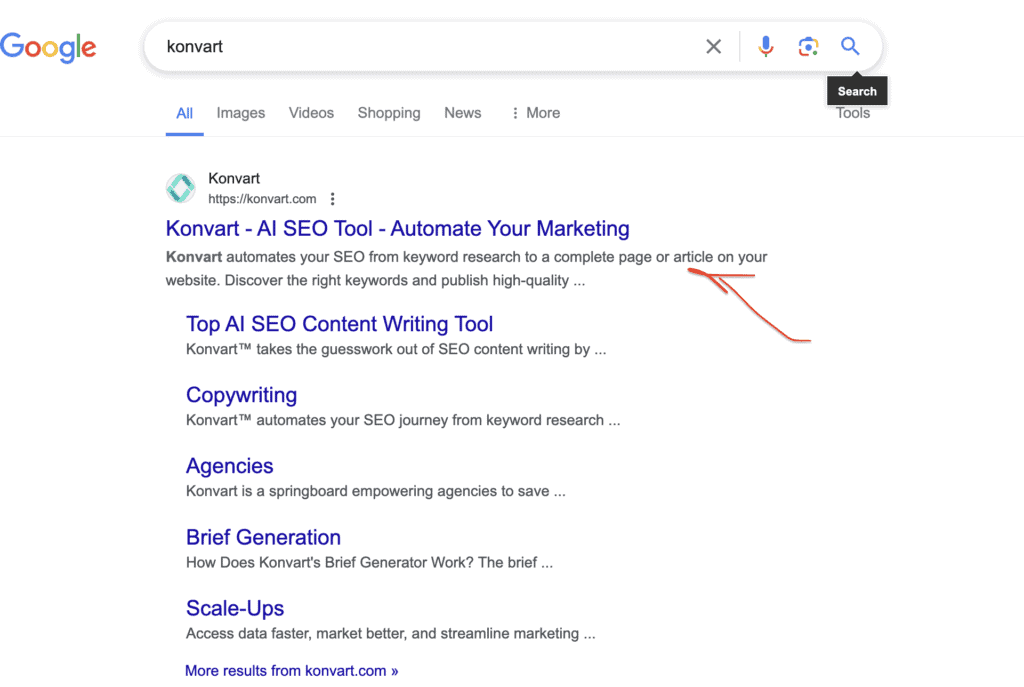
Keep your meta descriptions between 150-160 characters. Exceeding this limit may result in the text being cut off in search results, potentially losing vital information that could engage users.
While the meta description itself doesn’t directly impact search rankings, including relevant keywords can help users recognise the value of your content. Integrating these naturally is important, as stuffing keywords can make the snippet awkward and unappealing.
Use active voice and action-oriented language to encourage readers to take a specific step. Phrases like “Learn more,” “Get started,” or “Discover why” invite engagement and guide users towards interacting with your content.
Highlight what users will gain by reading your article. If you’re discussing solutions, mention the problem-solving aspect of your content. This approach not only improves click-through rates but also sets clear expectations for the reader.
It’s imperative that each page’s meta description is unique. Duplicate meta descriptions across multiple pages can dilute user interest and cause confusion about the content’s uniqueness. Tailor each description to reflect the specific content of each page, enhancing both user experience and SEO performance.
However, note that Google rewrites the meta descriptions of most pages, so it is in your best interest to ensure that your meta description is highly relevant—if possible, pick a snippet from your page.
Add Links That Make Sense
When adding links to your content, choose ones that enhance the reader’s understanding and provide additional value. This means linking to reputable sources that are directly related to the points you’re discussing. I have provided some tips below:
Understanding Contextual Linking
Contextual links are hyperlinks that seamlessly integrate into your written content. They should feel natural within the text and lead to sources that expand on the topic at hand or provide supporting data. For instance, if you’re discussing the impact of mobile optimisation on SEO, linking to a recent study on mobile browsing trends can offer readers deeper insights.
Quality Over Quantity
While it’s tempting to pack your posts with as many links as possible, this can overwhelm your readers and dilute the strength of your content. Focus on inserting links that are truly beneficial. A good rule of thumb is to ask yourself if the link adds significant value or new information. If it doesn’t, it probably shouldn’t be there.
Diverse Sources and Fresh Content
Relying on the same few sources can limit the perspective of your articles. Aim to diversify the external pages you link to. Also, prioritise sources that are up-to-date since outdated information can mislead readers and hurt your credibility.
Internal Linking Strategy
Remember to link internally within your site. This helps with SEO by spreading link equity and encouraging readers to explore more of your content, increasing page views and time on site. When linking internally, make sure the linked pages are relevant and interesting enough to keep your audience clicking.
Anchor Text Optimisation
The anchor text – the clickable text in a hyperlink – should be carefully chosen to reflect the linked page’s content while also being informative and natural within the context of your article. Avoid over-optimising with generic calls to action like “click here.” Instead, use descriptive keywords that give readers a clear idea of what they’ll find after clicking through.
How to Optimise Images
Image optimisation can significantly enhance page load times, improve user engagement, and increase search engine rankings. Here are some effective strategies for optimising your images:
- Use a few relevant images: These can be screenshots, infographics, images of your product or team, charts, etc.
- Choose the Right Format: Although JPEGs are ideal for photographs with lots of colors and PNGs are better for images that require transparency or have fewer colors, when it comes to SEO, WebP is advised due to Core Web Vitals. WebP offers high-quality results with smaller file sizes and is supported by many modern browsers.
- Compress Images: Large image files can slow down your website, negatively impacting user experience and SEO rankings. Tools like Adobe Photoshop, TinyPNG, or ImageOptim allow you to compress images without losing significant quality.
- Responsive Images: Use responsive design techniques to Ensure your images look good on all devices. HTML5 allows for the
srcsetattribute, enabling the browser to select different images based on the screen size of the device. This means faster loading times and a better user experience. - Descriptive Filenames and Alt Text: Rename your image files with relevant, descriptive keywords that reflect the content of the image and include these keywords in the alt text. This helps search engines understand and rank your content better and improves accessibility for users with visual impairments.
Checklist For Your First SEO-optimised Content
Before publishing your content, you must ensure that the following has been checked and effectively placed in your content.
- Analyse the topic by examining competing websites.
- List the keywords you want to focus on and know the length you want to shoot for.
- Include a meta title.
- Include a meta description.
- In your writing, employ paragraphs frequently under (H1, H2, and H3)
- Incorporate the keyword(s) into all content hotspots, including the title, body, and subheadings.
- Utilise multimedia, such as pictures and videos
Publish and Then Update Your Content Regularly
Search engines, like Google, prioritise websites that consistently update their content, considering them more relevant and useful to users. Regular updates signal to search engines that your website is active, helping to boost your rankings and maintain your visibility in search results.
Updating your content can significantly impact user engagement and SEO performance. HubSpot found that updating older blog posts with new content and images can increase organic traffic by as much as 106%. The reason is straightforward: updated content is more likely to meet current search demands and user expectations, which can lead to higher click-through rates and lower bounce rates.
What to Update
- Review for Accuracy and Relevance: Regularly check your existing content to ensure all facts, figures, and references are current. Industries evolve, and what was accurate two years ago might need to be updated.
- Incorporate Recent Keywords: Keyword trends shift over time. Use tools like Google Trends or Konvart to identify emerging keywords in your niche and integrate them into your existing posts to remain relevant and competitive.
- Enhance Readability: Break up large blocks of text with bullet points or numbered lists to improve readability and user engagement. Subheadings and bold text can help guide readers through the article and make key information stand out.
- Add Multimedia Elements: Enrich your articles with new images, videos, or infographics to provide added value and improve engagement rates. Visuals are particularly effective in retaining reader attention and can lead to longer dwell times, positively influencing SEO rankings.
- Promote Updated Content: Don’t just update; promote your refreshed content through social media channels, email newsletters, or other marketing platforms. This approach helps drive traffic back to your site and alerts users that new, valuable information is available.
Best Practices for Content Updates
- Schedule Regular Reviews: Set a timeline for reviewing content, whether monthly, quarterly, or annually, depending on the subject matter.
- Track Performance Changes: Use analytics tools to track how updates affect your site’s performance. Look at metrics like page views, bounce rate, and conversion rate before and after updates.
- Engage with User Feedback: Pay attention to comments or questions on your posts. They can provide insights into what additional information readers might need or want.
SEO Writing Tools
- Brief generation/research tools: Konvart brief generator
- Content writing tools: Google Docs, Konvart content generator
- Keyword research tools: Konvart keyword research tool
- Publishing tools: Konvart remote WordPress publisher
- Image creation tool: Midjourney, Dalle from OpenAI, Gemini
Start Creating Great SEO Content
Now you know how to write SEO-friendly content and the tools to use. As you ensure that your content is the best, also note that great content alone is not enough to rank well in the SERP – you need to have all the other SEO bits set up, including a good number of high quality backlinks and a good user experience,
Also, make it easy for readers to share your content on social media. Social signals don’t directly impact SEO rankings but can help increase visibility and traffic. Also, a leak of Google API showed that Chrome data may be used in ranking pages which means clicks to your site from other platforms may help.
Lastly, analyse your performance. Use tools like Google Analytics to track how well your content performs. Look at metrics like page views, average time on page, and bounce rate to gauge what works and what doesn’t.
And remember, you need the right tools in your arsenal. You can see how Konvart helps content writers and SEO specialists. For a SERP analyser and AI content writer that works, sign up for Konvart.



